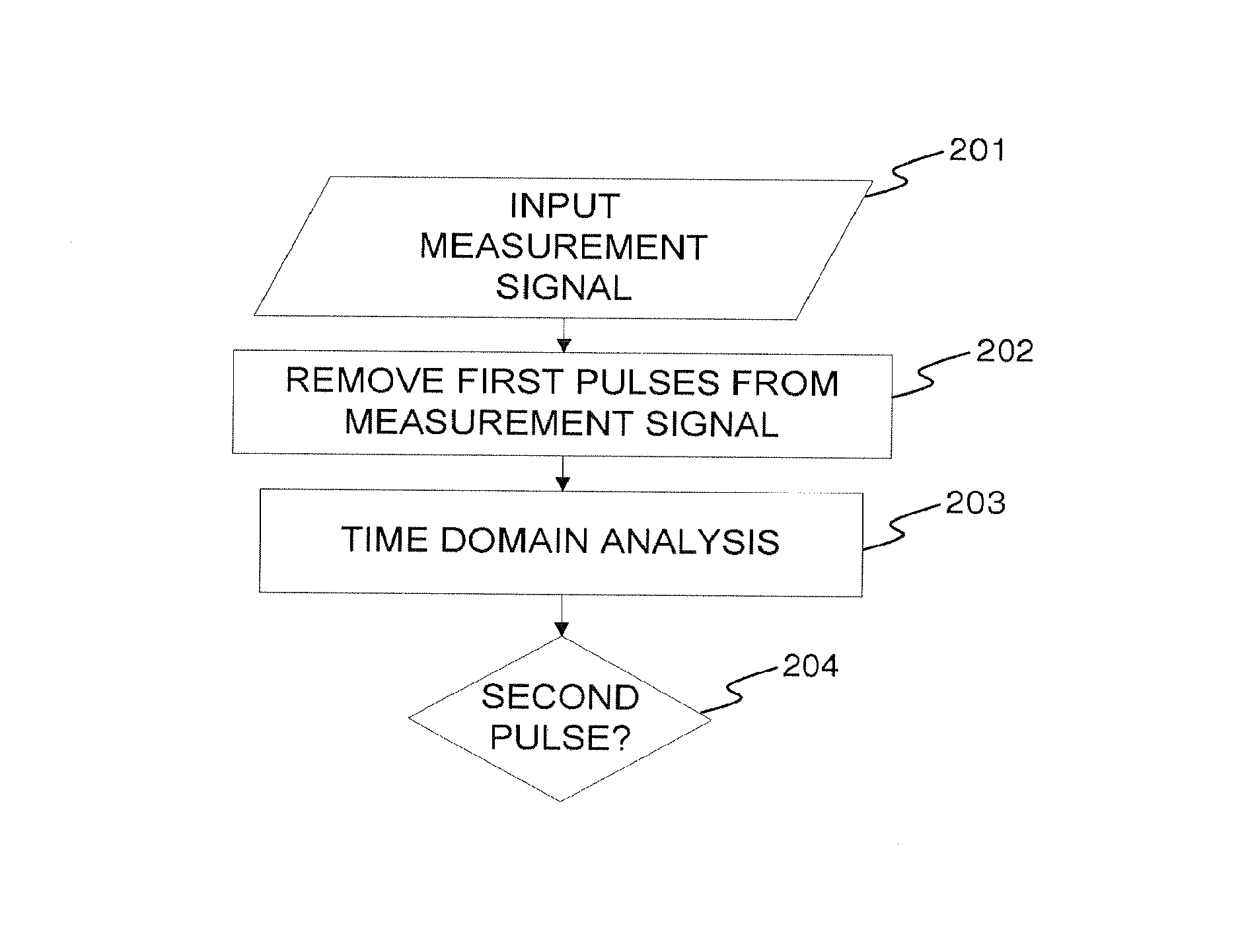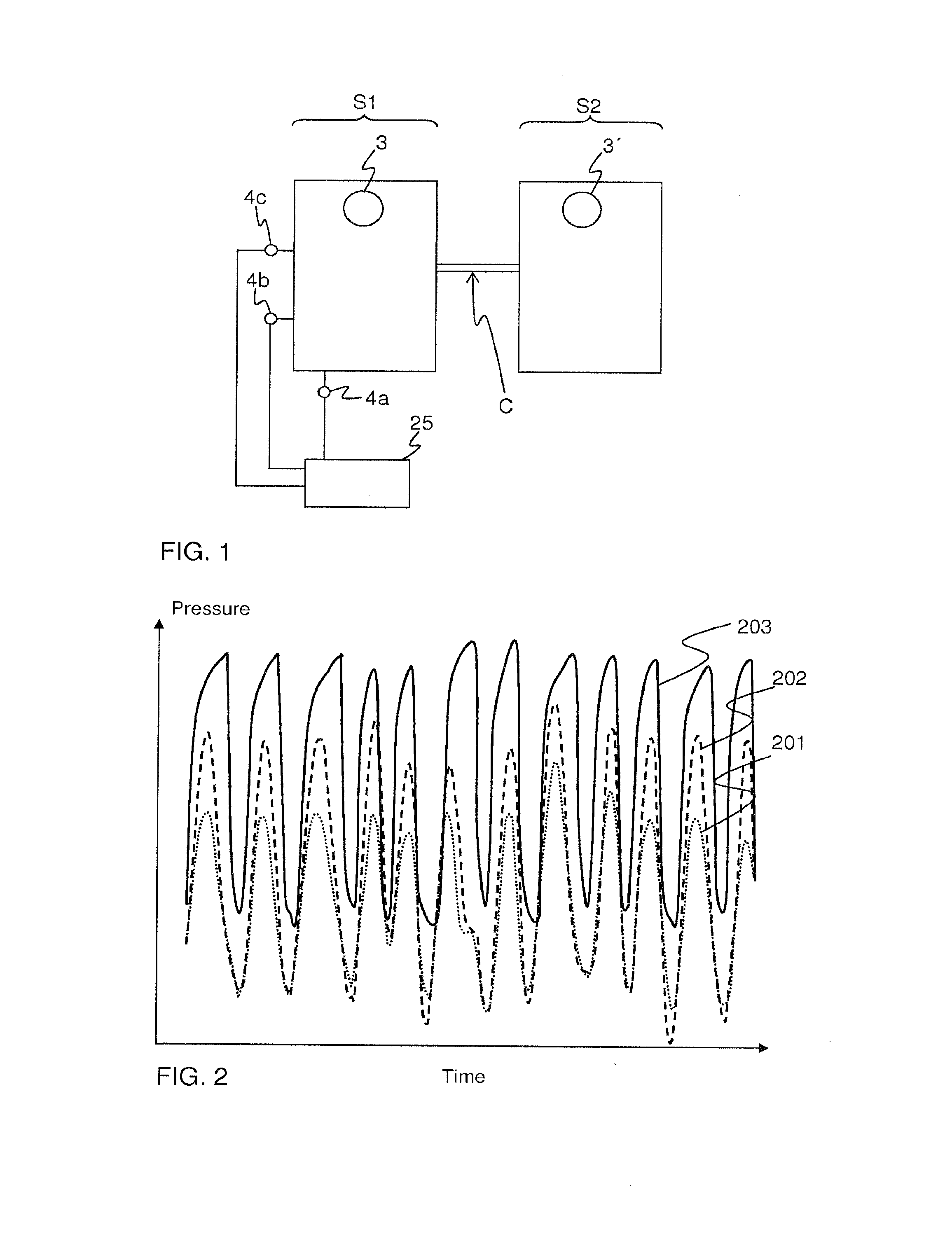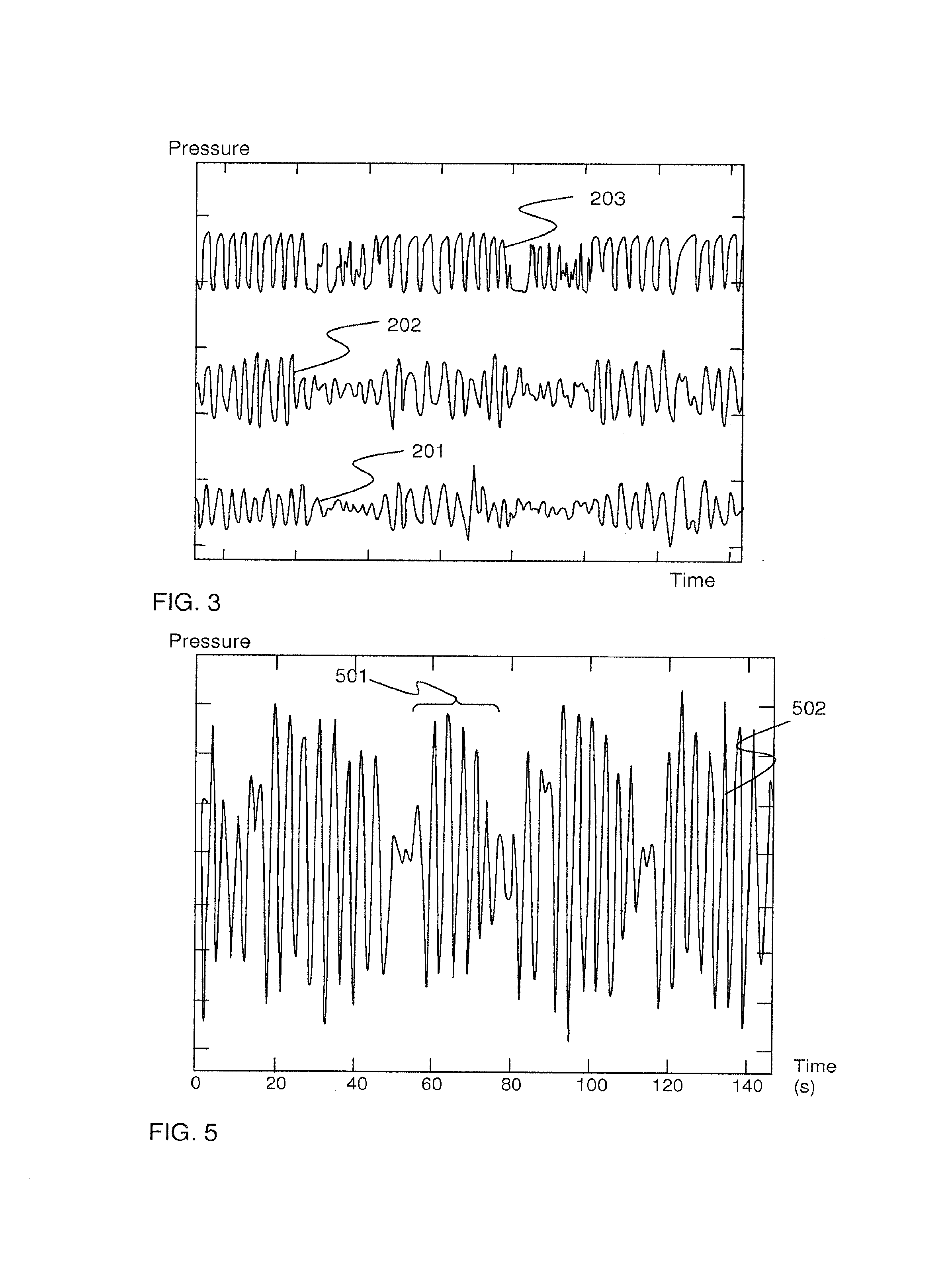Devices, a computer program product and a method for data extraction
a computer program product and data extraction technology, applied in the field of data extraction, can solve the problems of time-consuming and time-consuming measurement of vital signs, limited purpose and functionality of instruments providing information, and patients and other subjects may also suffer from reflex-controlled phenomena
- Summary
- Abstract
- Description
- Claims
- Application Information
AI Technical Summary
Benefits of technology
Problems solved by technology
Method used
Image
Examples
first embodiment
[0415]In a first embodiment, the predicted signal profile is directly obtained in a reference measurement before the extracorporeal circuit 20 is connected to the patient, and is then used as input to the subsequent removal process, which is executed when the extracorporeal circuit 20 is connected to the patient. In this embodiment, it is thus assumed that the predicted signal profile is representative of the first pulses when the system is connected to the patient. Suitably, the same pump frequency / speed is used during the reference measurement and during the removal process. It is also desirable that other relevant system parameters are maintained essentially constant.
[0416]FIG. 18 is a flow chart of a second embodiment. In the second embodiment, a reference library or database is first created based on the reference measurement (step 701). The resulting reference library is typically stored in a memory unit, e.g. RAM, ROM, EPROM, HDD, Flash, etc (cf. 25b in FIG. 12) of the survei...
second embodiment
[0425]In the following, the second embodiment will be further explained in relation to a number of examples. In all of these examples, the pump revolution frequency (“pump frequency”), or a related parameter (e.g. blood flow rate) is used to indicate the current operational state of the fluid containing system during the monitoring process. In other words, the pump frequency is used as search variable in the reference library. The pump frequency may e.g. be given by a set value for the blood flow rate output from the control unit, or by an output signal of a sensor that indicates the frequency of the pump (cf. pump sensor 26 in FIG. 15). Alternatively, the pump frequency could be obtained by frequency analysis of the pressure signal from any of the sensors 4a-4c during operation of the fluid system. Such frequency analysis could be achieved by applying any form of harmonics analysis to the pressure signal, such as Fourier or wavelet analysis. As indicated in FIG. 16(b), the base fre...
third embodiment
[0441]wherein ri(n) denotes a reference profile that is associated with the closest matching pump frequency vi in the reference library, rfi(n) denotes a reference profile that is reconstructed from the energy and phase data associated with the closest matching pump frequency vi in the reference library, and rf(n) denotes an estimated reference profile at the current pump frequency v. The estimated reference profile rf(n) may be obtained by applying predetermined functions to estimate the energy and phase data, respectively, at the current pump frequency v based on the energy and phase data associated with the closest matching pump frequency vi. With reference to FIGS. 21(b)-21(c), such a predetermined function may thus represent the change in energy data between different flow rates. Alternatively, the estimated reference profile rf(n) may be obtained by retrieving and combining (e.g. interpolating) energy and phase data for the two closest matching pump frequencies vi and vj as in...
PUM
 Login to view more
Login to view more Abstract
Description
Claims
Application Information
 Login to view more
Login to view more - R&D Engineer
- R&D Manager
- IP Professional
- Industry Leading Data Capabilities
- Powerful AI technology
- Patent DNA Extraction
Browse by: Latest US Patents, China's latest patents, Technical Efficacy Thesaurus, Application Domain, Technology Topic.
© 2024 PatSnap. All rights reserved.Legal|Privacy policy|Modern Slavery Act Transparency Statement|Sitemap



